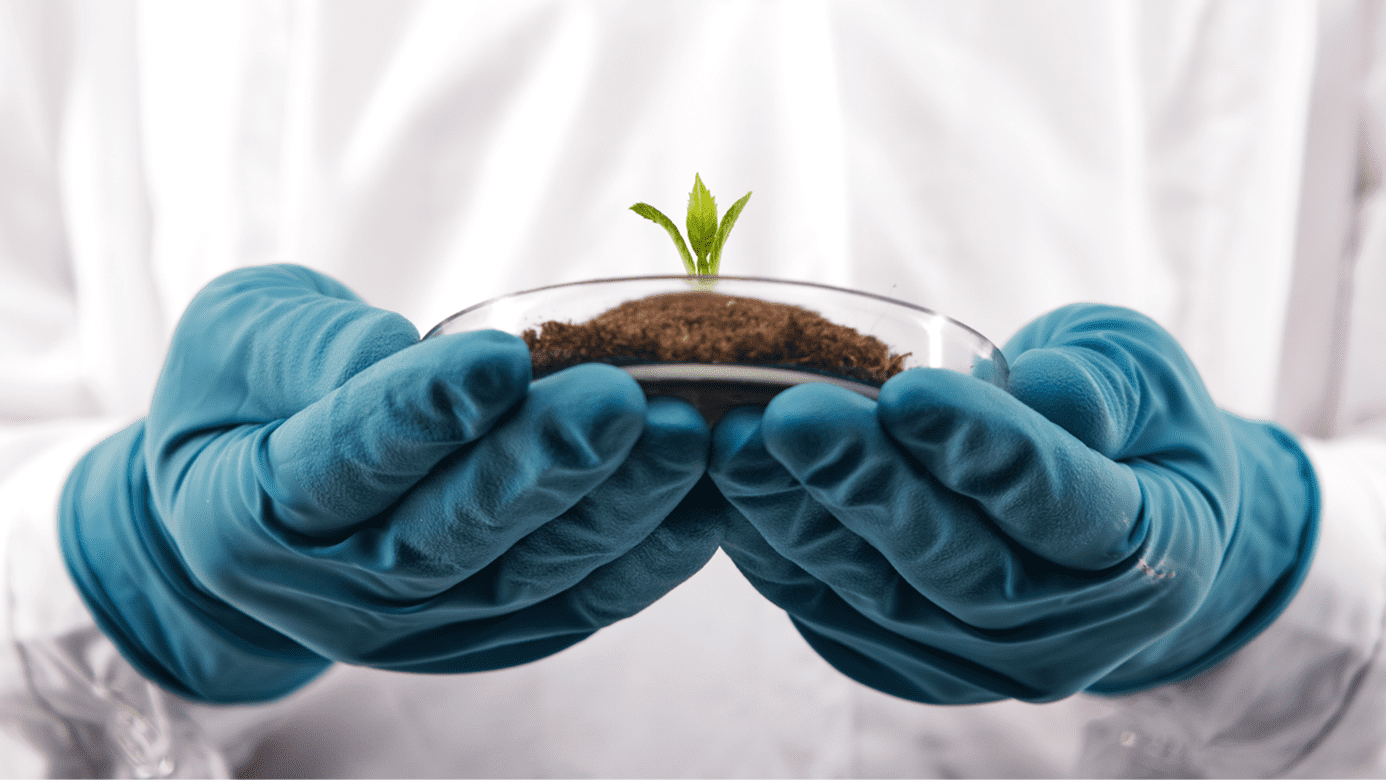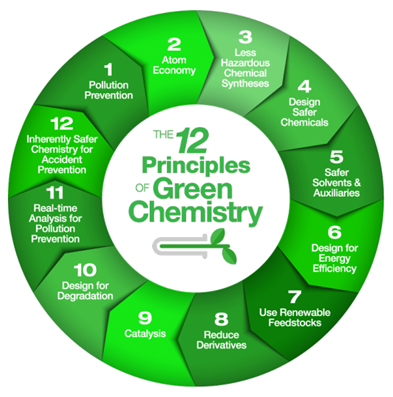From Nature to Lab: Unveiling the Secrets of Next-Generation Green Ingredient Production

For many years, the cosmetics industry has favored ingredients of natural origin to meet the growing demand for more environmentally-friendly products. However, the collection of raw materials from biomass can contribute to the depletion of natural resources, threatening the future sustainability of the cosmetics industry. New techniques for manufacturing sustainable cosmetic ingredients have therefore been developed in recent years to meet these ecological challenges. These techniques are varied, covering biotechnology, bio extraction, bio fermentation, green chemistry and even artificial intelligence.
The 3R : Reduce, Reuse, Recycle
One of the best-known is the production of biobased ingredients from waste. For example, ingredients such as used cooking oil, fruit and vegetable pulp and coffee grounds can be used to produce cosmetic ingredients. This method can help reduce food waste and greenhouse gas emissions, while providing high-quality ingredients for cosmetic products.
Upcycling is the technique of transforming waste into valuable new products, thereby reducing waste and limiting environmental impact. This technique has also found its way into the cosmetics industry, where it recovers raw materials and transforms them into new ingredients.
Consider a simple but yet interesting example, shea butter :
Even being the star of the natural ingredients used in many skincare products, it is often produced in the traditional way, which generates waste and requires a lot of energy. By using the upcycling technique, producers can recover the shea nuts left over after the production of shea oil and butter and use them to produce a lower value product which is called refined shea butter.
Another example of upcycling in the cosmetics industry is the recovery of used cooking oils to produce ingredients such as fatty esters and fatty acids. These ingredients are commonly used in skin care and make-up products.
Several cosmetics companies have embarked on the upcycling route to design sustainable ingredients. Biolie, for example, has developed a range of vegetable oils obtained from fruit waste. Greenphyt offers a range of botanical extracts derived from plant residues. Greentech has launched a line of active ingredients based on plant extracts recovered from the food industry. Symrise has developed a method for extracting essential oils from citrus peels and other agricultural by-products.
All these companies seek to reduce waste and create high-quality ingredients from materials previously considered waste.
Beyond Conventional Chemistry: Embracing Greener Practices
Green chemistry is a method of producing sustainable, environmentally-friendly cosmetic ingredients using less polluting chemical processes. It uses non-toxic solvents, eco-friendly catalysts and renewable reagents to produce greener cosmetic ingredients.

Bioextraction is an innovative technique for extracting natural ingredients from plants, using environmentally-friendly methods. This method is increasingly used to extract ingredients such as essential oils, plant extracts and natural flavors. Bioextraction can be carried out using natural solvents such as water, non-toxic organic solvents, or physical processes such as pressure and heat..
One example of this new technology is Retinyl Sunflowerate, a retinoic acid ester produced by Eastman. This molecule is produced from sunflower oil and retinoic acid, using Eastman’s EPA award–winning GEM technology, which applies the 12 Design Principles of Green Chemistry.
SolAmaze® Natural solution from Nouryon is a novel 100% bio-based, biodegradable film-forming polymer while being non-toxic to aquatic life and reducing the persistence in the environment. It offers superior water resistance and pleasing aesthetics, enabling many different applications in sun care, skin care, hair care and color cosmetics.
Another example is SurfactGreen, a natural surfactant based on upcycled sugar beet and fatty alcohol from rapeseed. This molecule is produced from renewable, biodegradable raw materials, using cleaner, more environmentally-friendly synthesis methods. This surfactant is used in many cosmetic applications, such as facial cleansers, shampoos and shower gels.
Exploring the Potential of Lab-Grown Plants in Cosmetics
Laboratory plant cultivation, also known as plant tissue culture, is an innovative technique for producing natural ingredients for cosmetics in a more sustainable and efficient way. Instead of growing whole plants, which often require a lot of water, soil and other resources, this technique involves isolating plant cells and growing them without soil or natural light.
This method enables ingredients to be produced with consistent quality and purity, regardless of climatic and geographical conditions. It also helps limit environmental impact by reducing deforestation and the consumption of natural resources.
Mibelle Biochemistry, a Swiss company specializing in the research and development of active ingredients for cosmetics, uses this technique to produce several of its ingredients. For example, their active ingredient "PhytoCellTec™ Alp Rose" is produced from cells of the Alpenrose flower, which cannot be grown outside its natural mountain habitat. Thanks to plant tissue culture, they are able to produce this ingredient sustainably and ethically, while preserving natural resources.
Fermentation paves the way for white technology
Biofermentation is a long-standing production method, but it is set to enjoy a major expansion in the near future. This technique is based on microorganisms such as bacteria, yeast or fungi to produce compounds of interest, such as enzymes, peptides, amino acids and polysaccharides.
Biofermentation enables these ingredients to be produced more efficiently and sustainably than traditional methods, as it uses renewable raw materials such as biomass, and produces less waste.
However, biological advances are not limited to bio fermentation. Enzymatic synthesis is another promising technique for the production of cosmetic ingredients. It involves using specific enzymes to catalyze chemical reactions and produce molecules of interest. This method is considered a more environmentally-friendly alternative to traditional chemical methods, as it requires less energy and produces less toxic waste.
Givaudan, a world leader in the creation of fragrances and flavors, uses biofermentation techniques to produce sustainable active ingredients for the cosmetics industry. For example, the company has developed an active ingredient from the fermentation of marine bacteria to stimulate collagen production in the skin. This ingredient is used in anti-aging products to improve skin appearance.
In addition to actives, biological advances such as biofermentation can also be used to manufacture more sustainable, environmentally-friendly texturizers. For example, Seppic has developed a cane sugar fermentation-based emulsifier called Emogreen, which is over 60% biodegradable and offers a sustainable alternative to traditional emulsifiers.
Aprinnova's Neossance range fits also into this category. The Neossance range being composed of plant-derived ingredients obtained through biotechnological advances such as biofermentation of sugar cane industry waste.
Why Cultivating Marine Technology is a Greener Choice
Marine technology has emerged as a promising avenue for the production of greener ingredients in the cosmetics industry. The vast oceans and seas harbor a rich diversity of marine life, offering a treasure trove of bioactive compounds and sustainable resources.
Marine ecosystems tend to have a higher resilience and natural capacity to regenerate compared to terrestrial ecosystems. The vastness of the oceans allows for a more distributed and dispersed impact, reducing the concentration of cultivation activities in specific areas. This can help mitigate the risks of habitat destruction and soil degradation that are commonly associated with intensive terrestrial agriculture.
Marine cultivation often involves suspended or floating structures, such as seaweed farms or offshore aquaculture systems. These systems utilize water columns rather than occupying land space, minimizing the need for land conversion and the associated loss of natural habitats.
Compared to traditional agriculture, it also often requires fewer inputs such as freshwater, fertilizers, and pesticides. This reduces the potential for water pollution, eutrophication, and soil degradation, leading to a lower environmental footprint.
Is AI the Game-Changer for Building a Greener Industry?
Artificial intelligence (AI) is an emerging technology that is beginning to be used in the cosmetics industry for the development of cosmetic actives and excipients. Indeed, AI makes it possible to analyze large quantities of data like molecular structures and predicting their physicochemical properties to find correlations. This enables the development of new, more effective and environmentally-friendly ingredients.
Not only can AI be used to analyze the properties of different ingredients and the most effective combinations to treat a specific skin condition. It can also help optimize production and formulation processes, reducing costs and improving the quality of finished products.
Givaudan, a leader in the creation of fragrances and flavors, recently launched a platform called "Carto", which uses machine learning to identify relationships between natural raw materials and the odorant molecules they produce. This platform makes it possible to discover new natural ingredients for perfumery and cosmetics in record time, reducing dependence on traditional natural sources and excessive collection of raw materials.
Conclusion
In conclusion, the integration of advanced scientific techniques and sustainable practices holds great promise for creating a greener cosmetic industry. From marine technology to white technology and artificial intelligence, these approaches offer sustainable solutions for ingredient production and formulation. By responsibly harnessing marine resources, cultivating lab-grown plants, and leveraging AI-driven optimization, the industry can reduce its ecological footprint and embrace a more sustainable future.
Collaboration and ongoing research are essential to ensure the long-term viability of these innovative approaches and drive the industry towards a greener path. At Safic-Alcan, we will continue to explore new techniques and scientific advances with our partners to find the best solutions to meet the needs of our customers and consumers while preserving our planet.






